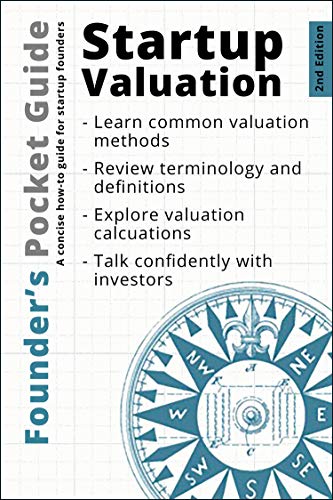
Founder's Pocket Guide: Startup Valuation
von Stephen Poland
As you accomplish milestones in your startup (build product, get customers) the value of your company increases.
Such early stage startups are better off raising capital in the form of friends and family loans, crowd funding like Kickstarter, or perhaps convertible debt.
For example, establishing a $4,000,000 valuation for an idea-stage startup with no paying customers and an inexperienced founding team falls into the too high, too early category.
Lack of Customer Validation. Many investors expect an early-stage startup to be engaged with potential customers, even if working versions of the product are still under development. Having actual customers validates that the product solves a significant problem and customers are willing to pay for it, which is the Holy Grail sought by investors (and founders alike.) Establishing a sizable valuation prior to building a customer track record is a mistake to be avoided at all costs.
Valuing the Idea or Market Potential. The startup team and the milestones achieved in a startup should be at the core of all valuations. Having experienced founders with prototypes developed, technology proven, paying customers, IP issued, skilled team recruited, and so on matters; these milestones add real value to a new venture. In contrast, ideas, business plans, and forecasted market sizes in themselves offer little value to investors. Think twice before assigning a valuation to an idea-stage venture and pitching to investors.
Without meaningful accomplishments achieved, pricing the startup often disadvantages founders. With few actual achievements, founders often feel pressured to accept a low valuation, resulting in heavy dilution early in the startup’s life. If founders give up too much, too early, they might become unmotivated.
Intellectual Property (IP). Does the startup have significant IP (patents, trade secrets, trademarks) or other strong competitive advantages?
Customer Traction. Do you have paying customers or numerous users signing up? At what rate can you add new ones? How much does it cost you to acquire a new customer compared to the lifetime value of that customer?
$250,000 for Each Yes. Using the Step-Up model is simple: each Yes checked off in the factors list earns you another $250,000 in pre-money valuation, with a maximum of $2.5 million (a common limit for most investors considering early-stage startups.)
As you might conclude, there are not exact formulas or even universally accepted methods for establishing early-stage startup valuations. No matter which method you use, or if you derive your own model, be sure that the resulting valuation can be easily explained, and is in alignment with the facts of your startup.
The Risk Mitigation method assigns dollar values to the accomplishments and validations of the startup in four categories of risk mitigation: Technology, Market, Execution, and Capital.
Big achievements get big values. For example, paying customers that keep coming back is perhaps one of the biggest achievements and should contribute a large dollar value to your valuation.
Developed Product/Service and Paying Customers. The startup had moved past the early stages of product development and customer discovery. Quality Metrics. You and your startup team have a good understanding of the key metrics that drive your business. For example, you know the cost to acquire each customer, what your customer churn rate is, what the lifetime value of a typical customer is. Stable Operation and Complete Team. There are no major gaps in your startup leadership team. Other team roles are filled with great people and your day-to-day operation is well defined. Funding Needs Are Well Understood. You know how much money you need to raise in your current round, and the uses of funds need to be clear and predicable.
Come back to pitch us again when you have more users, paying customers, IP locked down, etc.”
The DCF method also depends on accurate cash flow projections—something difficult if not impossible for early stage startups to predict.